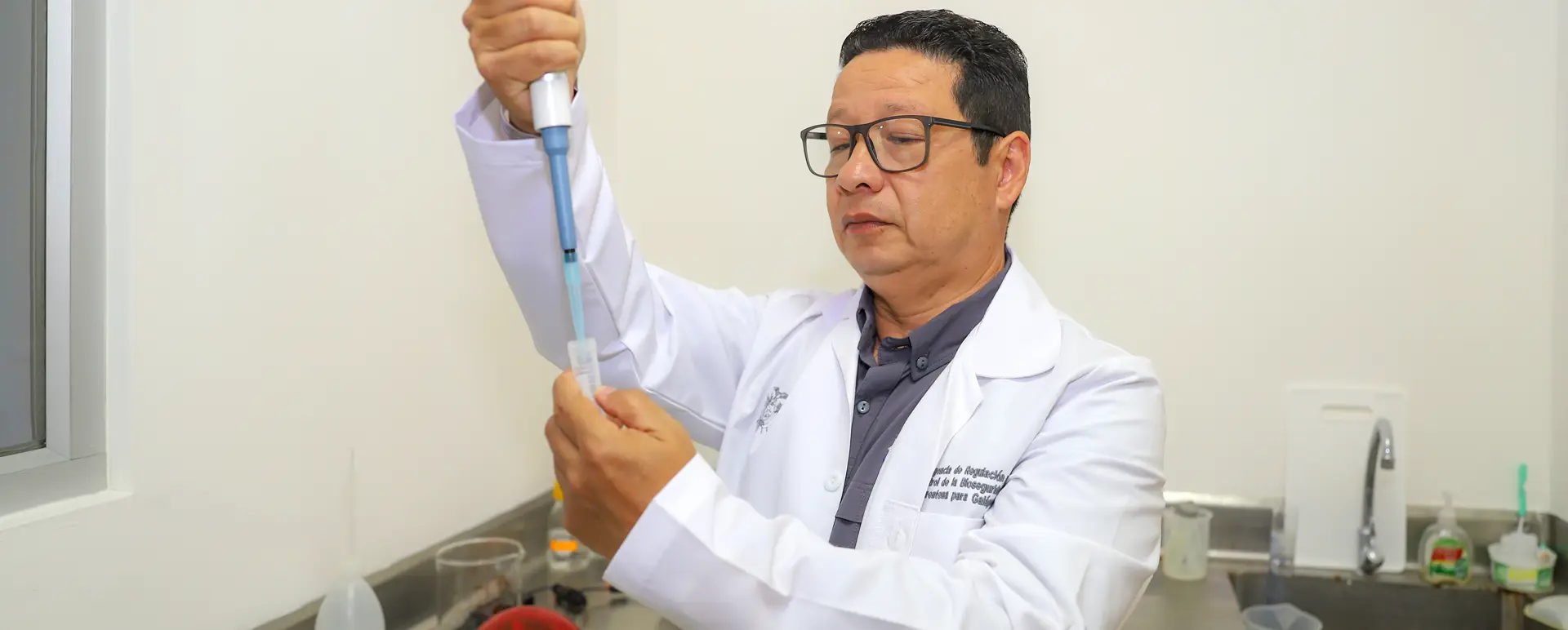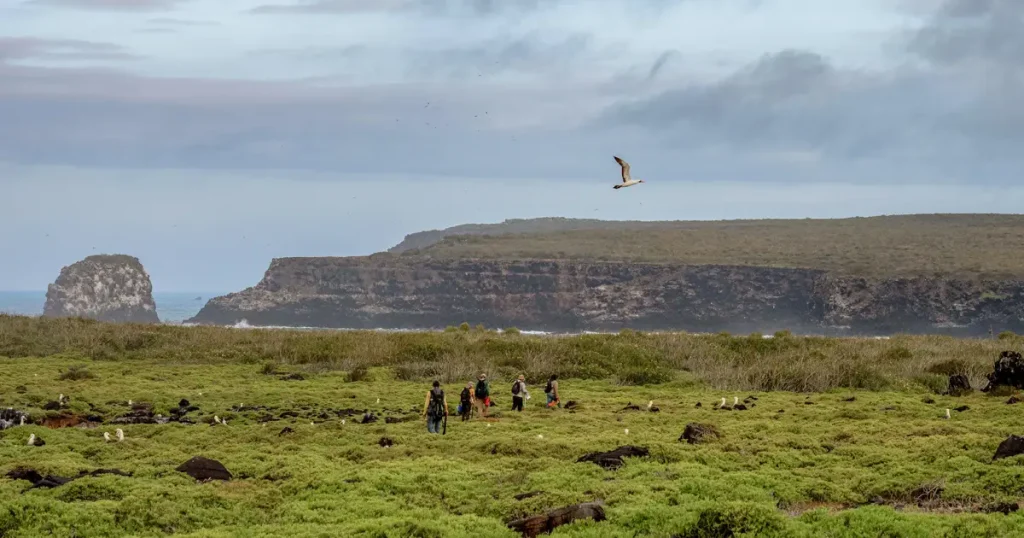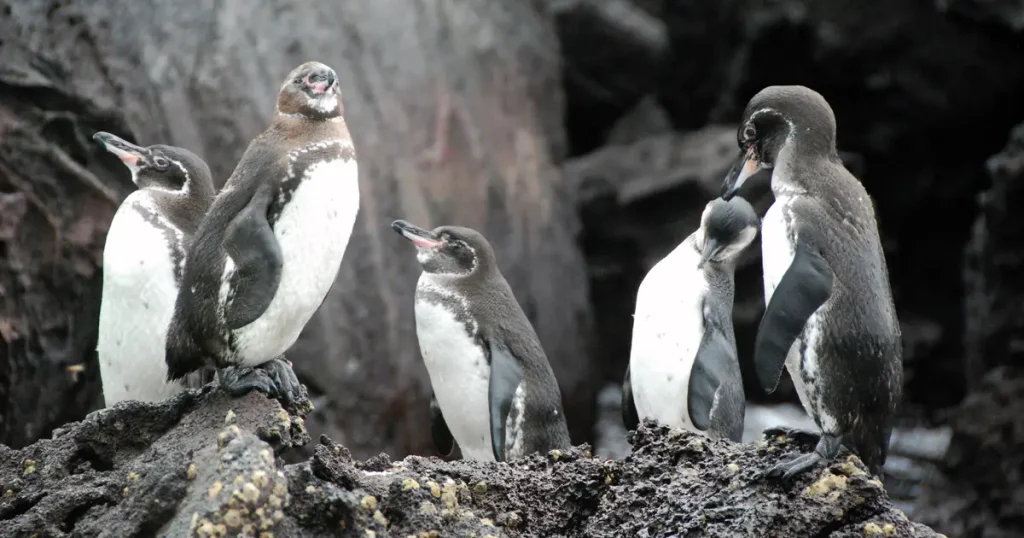Galápagos Conservancy and ABG Expand Pesticide Monitoring to Protect Life Across the Islands

In a place as fragile as Galápagos, even the smallest particles — like pesticide residues invisible to the naked eye — can cause serious damage. That is why Galápagos Conservancy invests in strengthening tools that help anticipate small risks before they lead to irreversible losses.
In Galápagos, a small oversight can have lasting consequences. The misuse of pesticides not only threatens human health, it can also directly affect iconic species found nowhere else on Earth. That’s why Galápagos Conservancy has strengthened its partnership with the Biosecurity Regulation and Control Agency (ABG), expanding its agricultural contaminant monitoring system to all four inhabited islands: Santa Cruz, San Cristóbal, Isabela, and Floreana.
This joint effort has a clear goal: to prevent harm before it’s too late.
The Problem Is Clear: Pesticides Can Harm Health and Endanger Species
The risks of pesticide use are well documented. In parts of Central America, overexposure to agrochemicals has been linked to alarming rates of chronic kidney disease in young farm workers. In Hawai‘i, pesticide residues near nature reserves contaminated the food web, leading to the decline of entire populations of endemic birds. And in several mainland Ecuadorian regions, studies have shown that chemical residues in soil impact wild species—especially those that feed on contaminated vegetation.
Galápagos is not immune. Agriculture here is essential to local life, but it must be practiced responsibly. When chemical residues remain in fruits, vegetables, or soil, they can seep into the environment and reach species like giant tortoises and Darwin’s finches or even affect the water people drink.
An Expanded Network of Prevention: Now Active on All Inhabited Islands

Thanks to our strategic alliance, the Agricultural Contaminants Lab—run by ABG and strengthened by Galápagos Conservancy—is no longer a limited initiative. With new equipment like incubators, centrifuges, strip readers, and heating plates, the team can now carry out faster, more accurate, and locally based analyses. Gone are the days of sending samples to the mainland and waiting days for lab results.
This expanded capacity changes everything. Problems are detected early. Contaminated products are removed from local markets. Farming practices are corrected. And unsafe foods are prevented from reaching people’s tables.
“Our commitment is clear. We want to strengthen the work of the institutions that protect Galápagos through science. These actions are only possible thanks to a sustained, strategic effort aligned with the priorities of the archipelago.” — Jorge Carrión, Director of Conservation, Galápagos Conservancy
Conservation Through Data, Science, and Action
Since 2023, this analysis system has operated under the Codex Alimentarius—an international food safety standard. Samples are collected directly from local markets, in close collaboration with producers. And when tests show an issue, action is taken immediately.

This is modern proactive conservation: based on science, informed decision-making, and tangible results. “This is an integrated health project for Galápagos. It ensures that the fruits and vegetables reaching families meet safety limits, protecting both people and the ecosystem.” — Romel Iturbide, Food Safety Process Coordinator, ABG


Protecting Galápagos Begins with What We Eat
Caring for Galápagos species, in addition to tourist trails and tortoise breeding centers, includes the crop fields and agricultural practices. Because what ends up on our plates also ends up impacting the species that make these islands so unique.
For this reason, Galápagos Conservancy will continue to support this monitoring network and the dedicated team at ABG—because the health of people and the survival of the archipelago’s extraordinary species are deeply intertwined.
Ultimately, prevention isn’t optional. It’s the only way forward.
Your support keeps this prevention network strong.
Sources Consulted:
Share:




